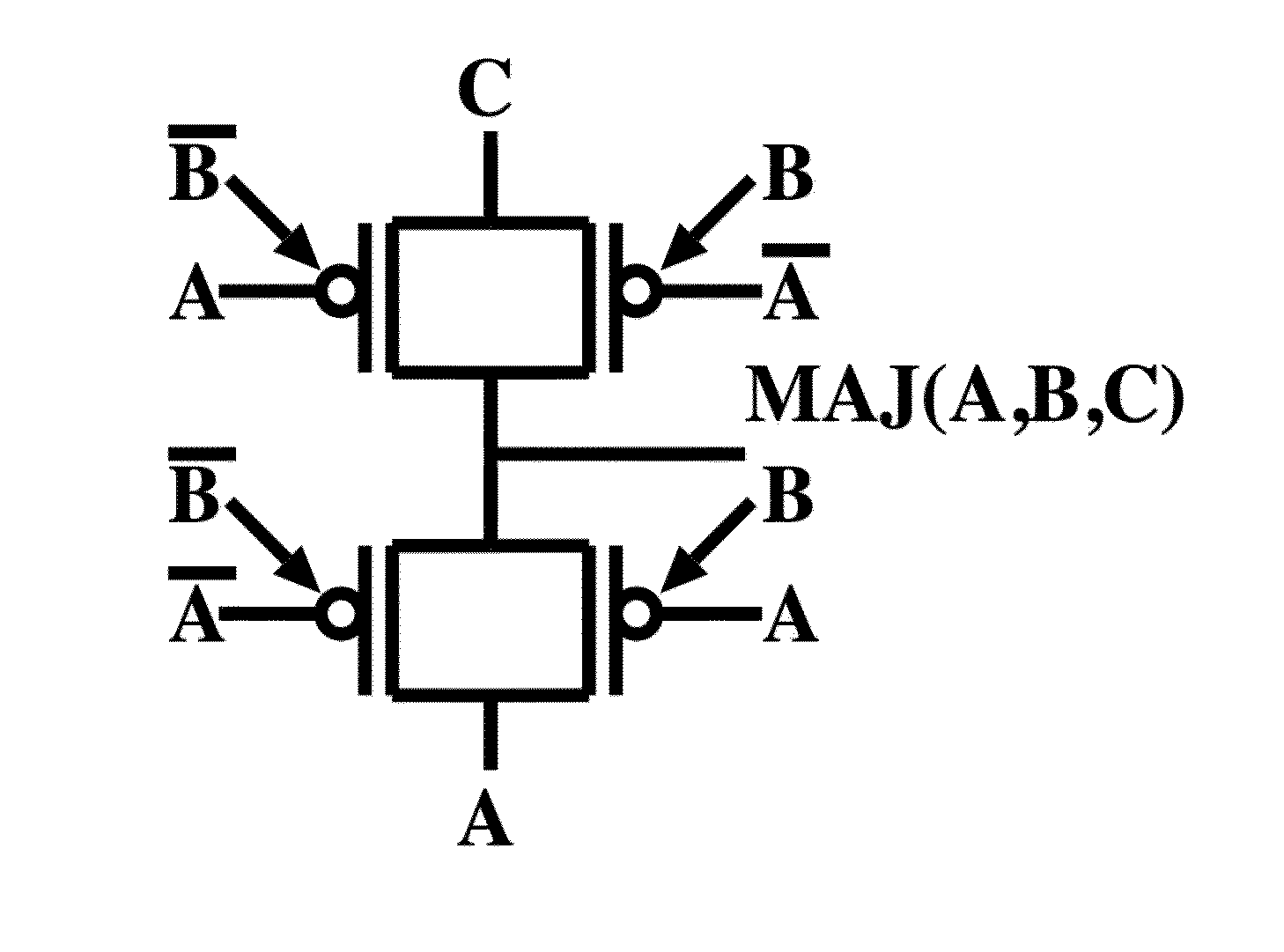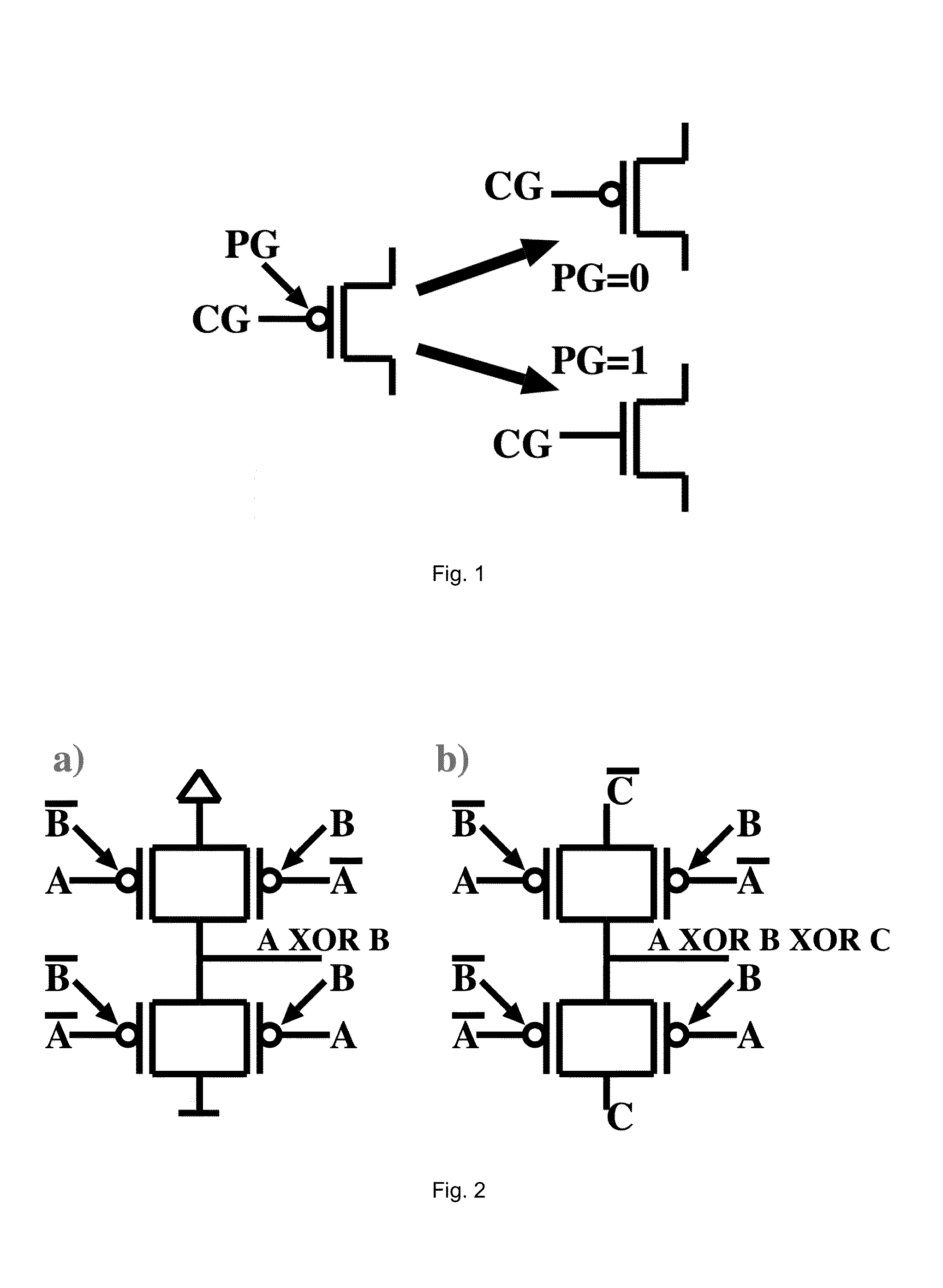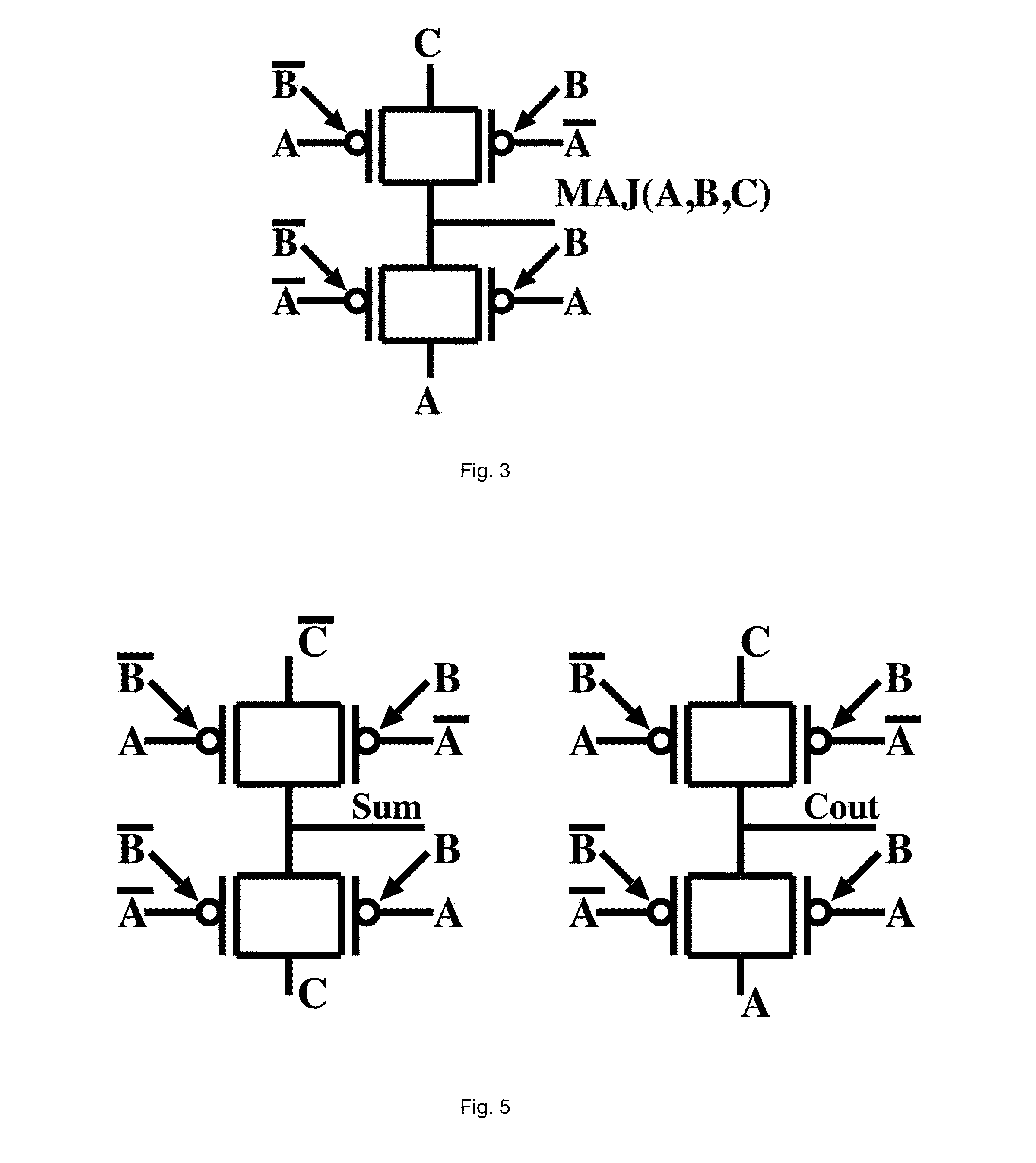Controllable polarity FET based arithmetic and differential logic
a controllable polarity, differential logic technology, applied in the direction of computation using denominational number representation, pulse technique, instruments, etc., can solve the problems of missing further optimization opportunities, no efficient implementation of unate functions, short circuit current,
- Summary
- Abstract
- Description
- Claims
- Application Information
AI Technical Summary
Benefits of technology
Problems solved by technology
Method used
Image
Examples
Embodiment Construction
Ambipolar Majority Gate
[0039]The present invention concerns a novel 3-input Ambipolar Majority gate. With respect to a novel FinFET realization of the Majority gate in [14], the described Ambipolar Majority gate avoids series stacking of transistors making the relative gate smaller and faster. Moreover, we only need the complementary signals of 2 inputs over 3 while in [14] all the 3 inputs need to be complemented. The description further describes an example embodiment wherein the inventive Ambipolar Majority gate is employed to efficiently design a Full-Adder. The proposed Ambipolar Majority Gate enables an advantageous realization of the Full-Adder with Vertically Stacked Nanowires (VSN).
[0040]The 3-input majority function has the following minimal Sum Of Product (SOP) representation:
Maj(a,b,c)=ab+bc+ac
[0041]This can be rewritten using the XOR operation as:
Maj(a,b,c)=(a⊕b)c+(a⊕b)′a
[0042]With x(a,b)=a⊕b, it becomes
Maj(a,b,c)=x(a, b)c+x(a, b)′a
[0043]This form suggests to use a C...
PUM
 Login to View More
Login to View More Abstract
Description
Claims
Application Information
 Login to View More
Login to View More - R&D
- Intellectual Property
- Life Sciences
- Materials
- Tech Scout
- Unparalleled Data Quality
- Higher Quality Content
- 60% Fewer Hallucinations
Browse by: Latest US Patents, China's latest patents, Technical Efficacy Thesaurus, Application Domain, Technology Topic, Popular Technical Reports.
© 2025 PatSnap. All rights reserved.Legal|Privacy policy|Modern Slavery Act Transparency Statement|Sitemap|About US| Contact US: help@patsnap.com



